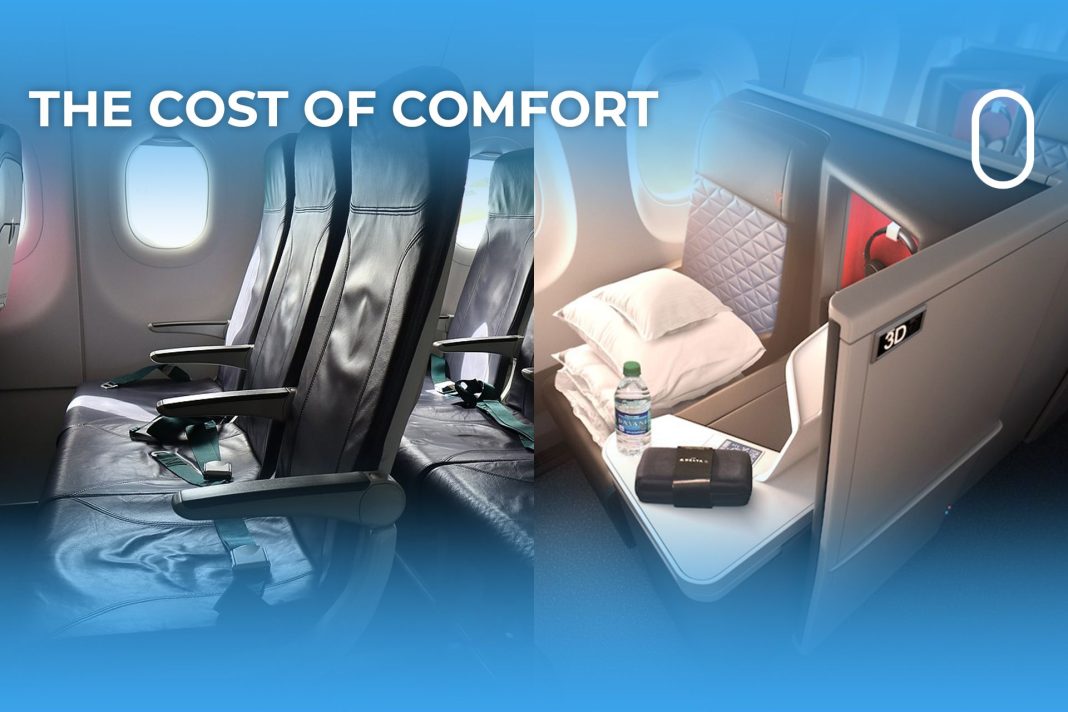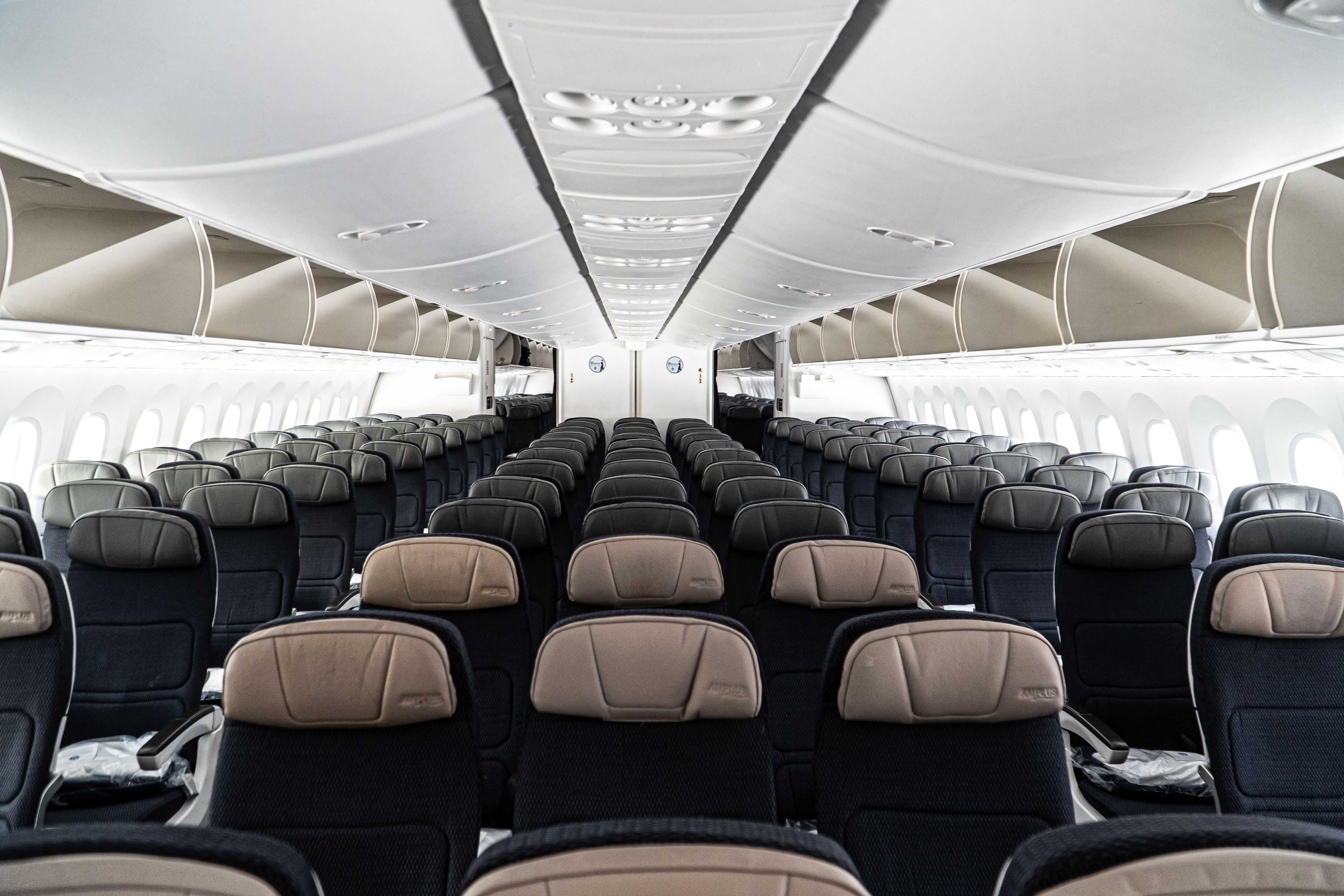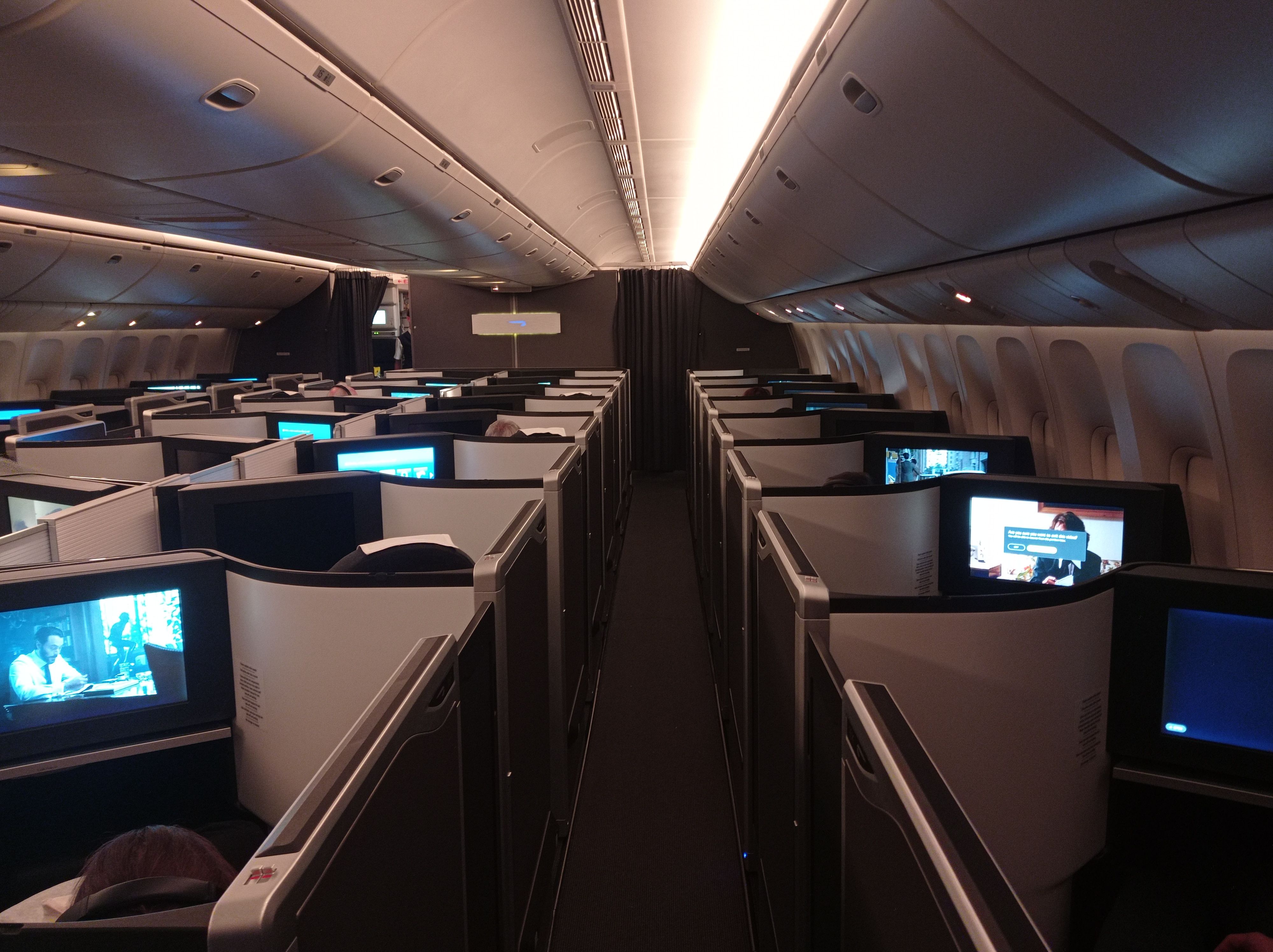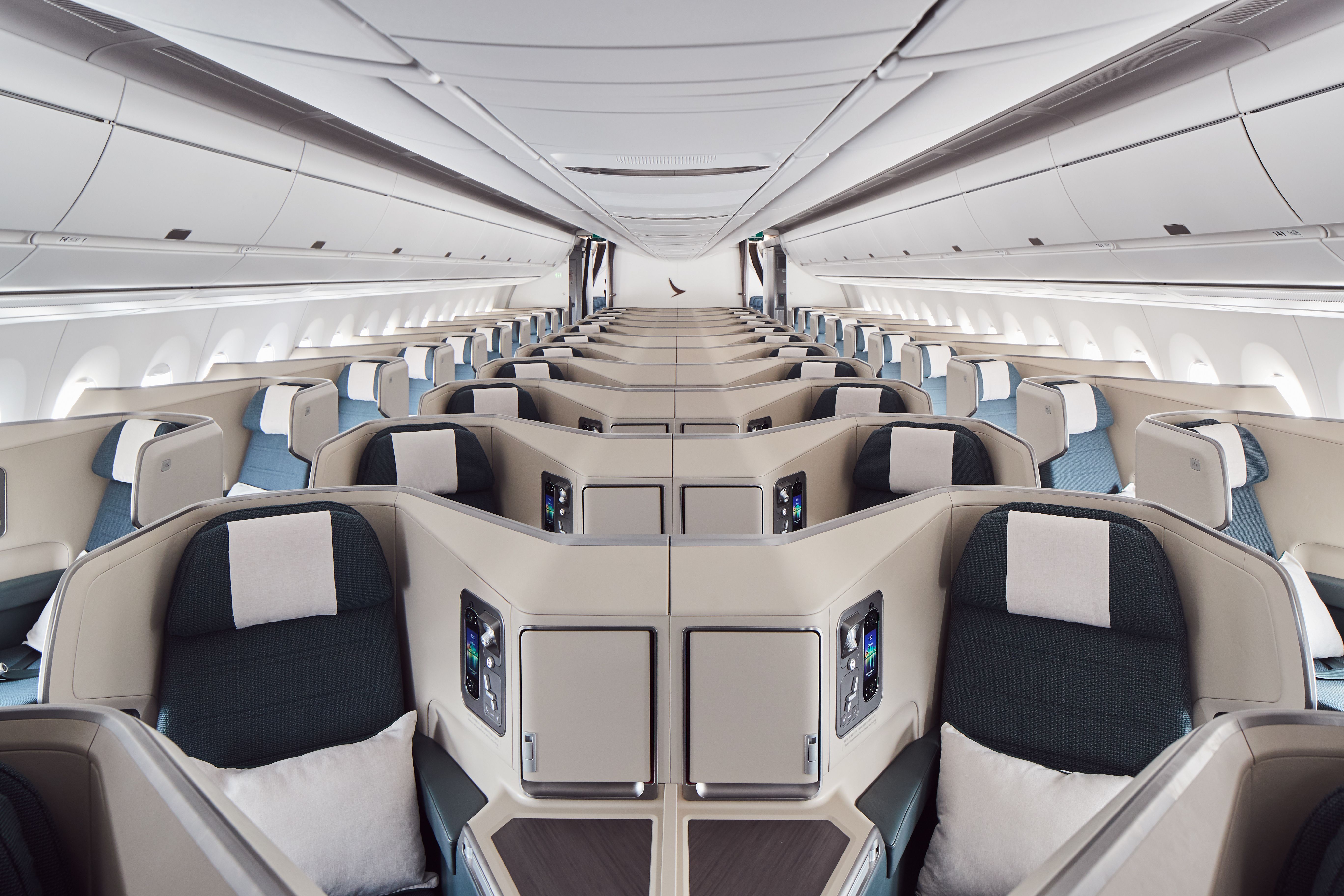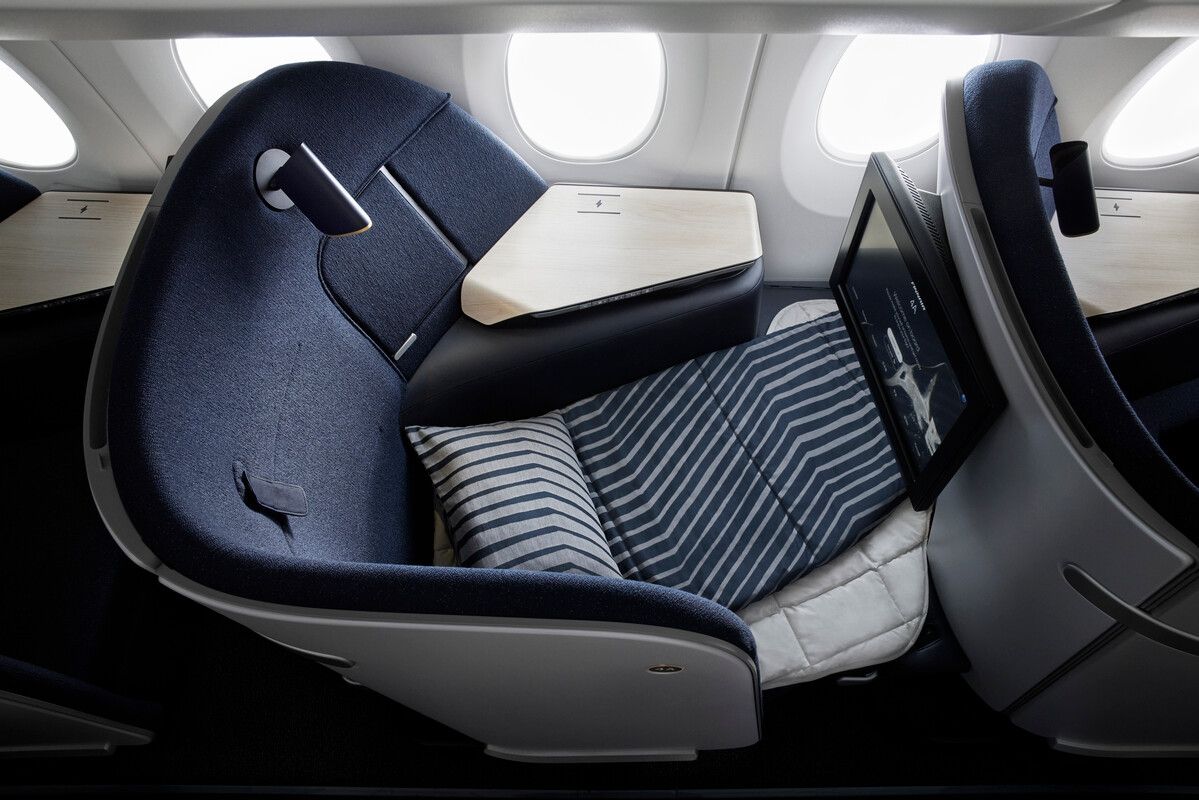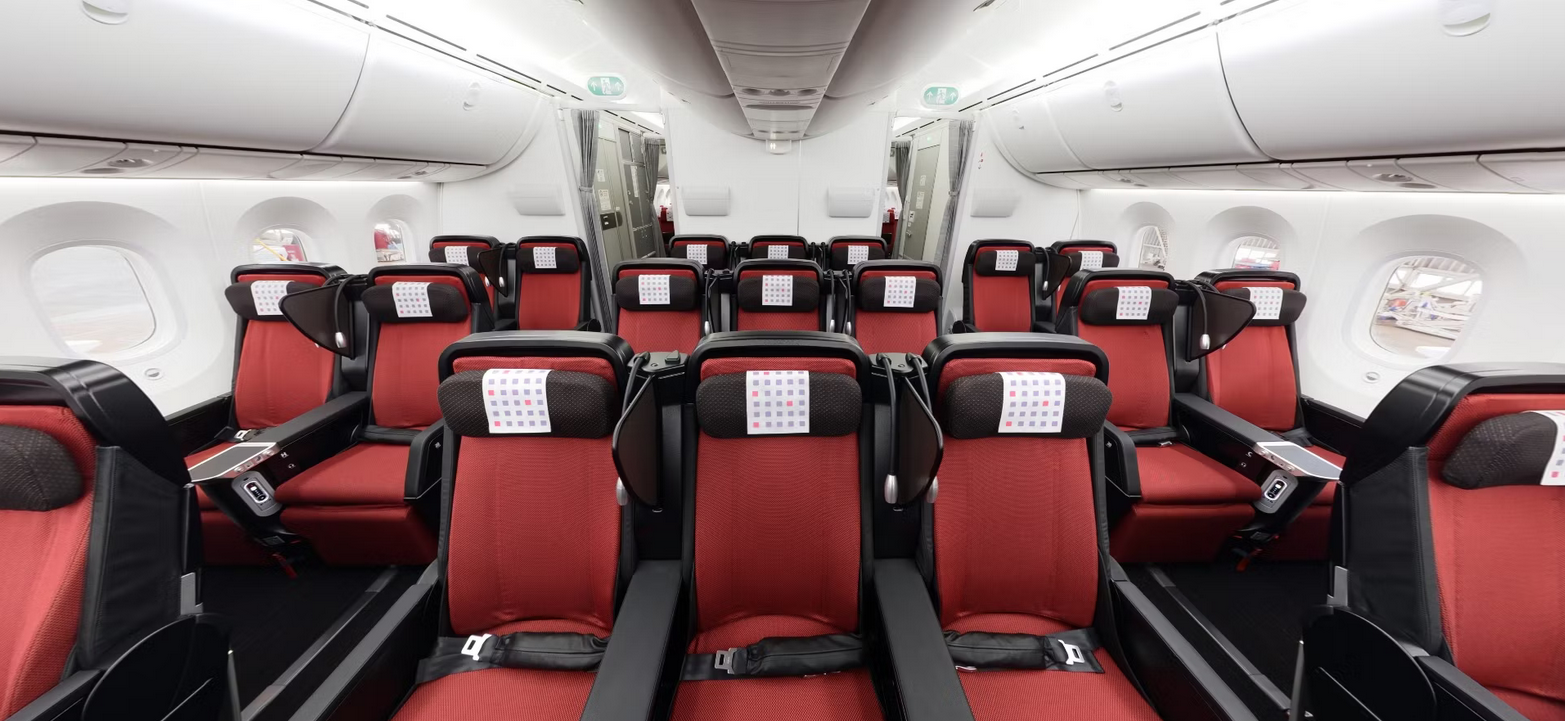Many things in the aviation industry are very costly. Aircraft components often don’t come cheap, and this includes seats; fitting out a new aircraft with different cabins can cost millions of dollars. Airlines rarely share exact pricing, but this short guide looks at the typical ranges for seat prices.
“Cheap” economy seats
Of course, economy seats are the cheapest, and the light, no-frills seats used by many low-cost carriers are the lowest priced of all. Estimates for these seats range from around $4,000 up to $10,000. The larger, more padded seats, used by many full-service airlines and on larger, widebody aircraft, will be closer to this upper estimate. Premium economy seats likewise will be at or above this level.
Photo: Lukas Souza | Simple Flying
This may not be as “cheap” as many passengers expect. Aircraft seats must meet strict safety requirements, including crash and impact survival and withstanding high forces. This leads to increased development and manufacturing costs, as well as components that are far from the cheapest available.
Business and first class seats are well into six figures
Business and first class seats have improved significantly over the past years and continue to do so. It was only in 2000 that British Airways introduced the first flat bed as a standard offering in business class. Nowadays, a flatbed is a minimum expectation for a good long-haul business class cabin. Many airlines are going further, introducing more suite-style seating that compares more with first class. British Airways’ new Club Suite is an excellent example of this.
Photo: Justin Hayward / Simple Flying
For these high-quality, flatbed seats, prices can be intense. And airlines and manufacturers do not usually release details of the deals reached or the fees paid. Many airlines do, however, alter or customize their own seat design based on a manufacturer’s base product. With only a few main seat manufacturers, there is often very little difference between airlines’ seats. As just a few examples:
Photo: Cathay Pacific
- The Super Diamond seat, manufactured by Collins Aerospace, is another popular product used by airlines, including British Airways, Qatar Airways, Westjet, Air China, and Hong Kong Airlines. British Airways has adapted it to become its new Club Suite product.
- The Thompson Vantage XL seat from Thompson Aerospace offers a staggered cabin layout and is used by airlines, including Delta Air Lines, JetBlue, Qantas, Malaysian Airlines, and LATAM.
Prices for these standard or customized seats will vary greatly – typically between $100,000 and $300,000 per seat. Top-level first-class suites can be even more than this. The Points Guy conducted exciting research into this, with input from several industry leaders. They write:
“Business-class and first-class seats are more expensive, starting at around $60,000 and increasing to $100,000… Carriers with especially luxurious seats such as Emirates, Etihad or Qatar will spend more… There are seats in the $150,000 to $300,000 range, and some airlines spend considerably more.”
For the airline, there is also a higher cost of upkeep and maintenance to consider for complex business and first class seats. These seats have a lot of features and moving parts, requiring more checking and maintenance than a low-profile economy seat. As a result, Finnair’s new business class seat is a particularly interesting development. It has a comfortable but fixed shell that allows passengers to recline and sleep – and with minimal mechanical parts, reducing related costs.
Photo: Finnair
Filling the aircraft – the aircraft seat market
Remember that these prices are estimates of the cost per seat. At an estimated cost of $4,000 per seat, filling a typical 200-seat narrowbody would cost $800,000. More expensive seats like swanky business or first class suites can create eyewatering invoices.
Photo: Japan Airlines
With strong aircraft order books and large backlogs of aircraft to be delivered, it is no surprise that the airline seating market is doing well. According to market research firm Technavio, the aircraft seating market is expected to grow by $13 billion between 2022 and 2026.
Would you like to discuss more about airline seats and their differences? Do you know any specific details on available seat deals and transactions? Let us know in the comments section.
Source: The Points Guy
[ad_2]
Source link
